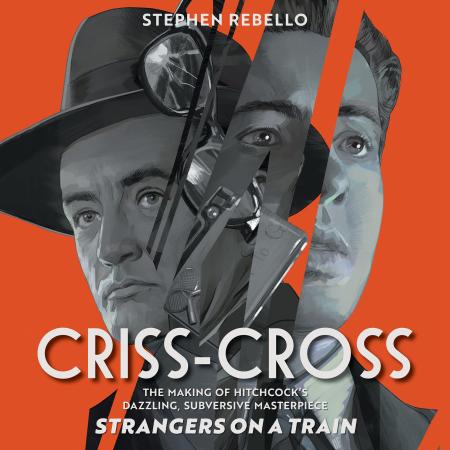Shopping Cart
Criss-Cross
The Making of Hitchcock's Dazzling, Subversive Masterpiece Strangers on a Train
Description
For the very first time the tense and drama-filled story of the making Alfred Hitchcock’s Strangers on a Train is revealed as author Stephen Rebello takes readers deep into the shadows and light of one of the most subversive, corrosively funny, and beloved suspense thriller masterworks.
As entertaining as it is to watch Strangers on a Train, so too is the previously untold backstory that packs all the suspense, drama, and twists of a thriller. After all, what are the hallmarks of a great Hitchcock movie? A larger-than-life, complex cast of characters, each with something to prove, lose, or hide. Check. Tremendous risk, outsized conflict, and emotion as those men and women confront challenges off the set. Check. Feuds, deceptions, unlikely alliances, and double-crosses. Check. Coming off a 5-year-string of flops, Alfred Hitchcock gambled big on adapting Patricia Highsmith’s debut novel, which critics called “preposterous” and “unconvincing,” in addition to “unsavory,” and “sick” (1950s code words for “gay” and “perverted”). Each step of the production was fraught with battles, but Hitchcock masterfully stayed two steps ahead of his opponents as he fought to bring his vision to life. Strangers on a Train became not only a creative high-water mark and box-office smash for Hitchcock, but also kicked off his unmatched decade of classics including Dial M for Murder, Rear Window, Vertigo, North by Northwest, and Psycho.
Richly documented, meticulously researched, and stylishly written, Criss-Cross is more than an authoritative film book. It is a portrait of an especially politically paranoid, misogynistic, and homophobic era in America, a time of dramatic transition in the entertainment industry, and a day of reckoning for Alfred Hitchcock and a few other talents with whom he made a dark, resonant, and prescient work of art.
As entertaining as it is to watch Strangers on a Train, so too is the previously untold backstory that packs all the suspense, drama, and twists of a thriller. After all, what are the hallmarks of a great Hitchcock movie? A larger-than-life, complex cast of characters, each with something to prove, lose, or hide. Check. Tremendous risk, outsized conflict, and emotion as those men and women confront challenges off the set. Check. Feuds, deceptions, unlikely alliances, and double-crosses. Check. Coming off a 5-year-string of flops, Alfred Hitchcock gambled big on adapting Patricia Highsmith’s debut novel, which critics called “preposterous” and “unconvincing,” in addition to “unsavory,” and “sick” (1950s code words for “gay” and “perverted”). Each step of the production was fraught with battles, but Hitchcock masterfully stayed two steps ahead of his opponents as he fought to bring his vision to life. Strangers on a Train became not only a creative high-water mark and box-office smash for Hitchcock, but also kicked off his unmatched decade of classics including Dial M for Murder, Rear Window, Vertigo, North by Northwest, and Psycho.
Richly documented, meticulously researched, and stylishly written, Criss-Cross is more than an authoritative film book. It is a portrait of an especially politically paranoid, misogynistic, and homophobic era in America, a time of dramatic transition in the entertainment industry, and a day of reckoning for Alfred Hitchcock and a few other talents with whom he made a dark, resonant, and prescient work of art.
Newsletter Signup
By clicking ‘Sign Up,’ I acknowledge that I have read and agree to Hachette Book Group’s Privacy Policy and Terms of Use
